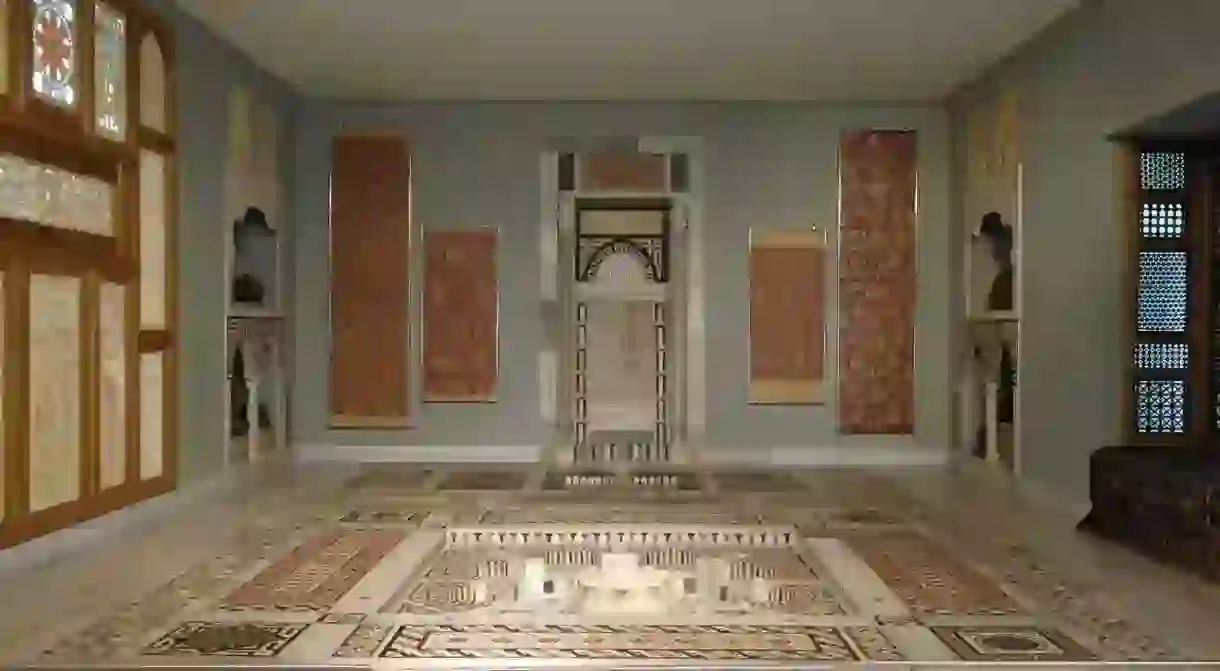Why the Museum of Islamic Art in Athens is a Must Visit

Located next to the Doric temple of Hephaestus and the Kerameikos cemetry, the Islamic Museum is one of Athens’ hidden gems.
While the main Benaki Museum in Kolonaki has enjoyed a reputation as a must-visit for decades, this Museum of Islamic Art is less talked about. This shouldn’t be the case. Housed in a neo-classical building, there’s a wealth of exhibits to discover and explore. The museum houses the private collection that Antonis Benakis amassed while living in Egypt.
While fascinating in itself, the museum also serves to contextualise Greece within the wider history of the Ottoman Empire. Visitors will encounter and further understand the shifting borders in the country, gaining fascinating insight into its rich and diverse history. Here are just some of the other reasons you should visit the Museum of Islamic Art in Athens.
The ancient discoveries in the basement
In 1996, as part of renovations to redevelop the Kerameikos area, ancient ruins were discovered in what was then becoming the Museum of Islamic Art building. These were identified as part of an ancient Athenian city wall and tomb. Visitors to the museum are able to visit these discoveries in the basement, where they have been preserved in their original location – the design of the museum was especially changed to fit around them. Unlike many tourist attractions in Athens, you’ll find yourself able to enjoy these at your own pace, and with enough space to savour these fantastic finds.

A perfectly preserved chess board
The museum houses a collection of more than 8,000 works. These date back as far as the 7th century. Among these early treasures is an exquisite and ornate chess board. Dating between the 14th-17th century, the board is intricately carved from wood and ivory. There’s also almost all of the pieces, which makes for a truly impressive display.

A range of ornate ceramics
There are many ancient plates, bowls and vases on display at the Museum of Islamic Art. These ceramic discoveries range from regions across the Middle East, Asia and North Africa. From the 7th century, there are highly ornate works on display. These can be found throughout the museum, with exhibits ranging through to the 1800s. Many of these are purely decorative, with floral and traditional patterns in golds and terracottas, which evolve to more diverse hues as time progresses. However the use of colour, specifically vivid turquoises and bright pinks, further illustrates the social narratives to be found on some – a snapshot into daily life many centuries ago.

Reception room from Cairo
An especially striking exhibit in the museum is the interior of a reception from a 17th century Egyptian mansion. This marble room features a central fountain and intricate tapestries at the end wall. The rooms offers compelling insight into the lives of affluent individuals in Egypt at this time. It reveals how they would socialise and entertain.

A café with a view
There are many rooftop bars and restaurants in Athens, with most offering impressive views. The café at the Museum of Islamic Art is a quieter spot to enjoy the historic landscape. There are views of the Kerameikos cemetery and the Parthenon. Food is simple but delicious. Sandwiches and salads are the main offer, but there’s also an extensive loose tea menu well worth exploring. Inside, make sure to savour the mural by local artist Navine Khan Dossos.














